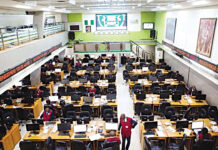The Nigerian naira has experienced significant fluctuations in its performance within the foreign exchange (FX) market recently. Following a series of interventions by the Central Bank of Nigeria (CBN), the naira has shown a mixed response, improving against the US dollar in the official market while facing depreciation in the parallel market. Understanding these market dynamics is crucial for stakeholders as they navigate the complexities of currency valuation and economic conditions in Nigeria.

The Central Bank of Nigeria has actively engaged in measures to stabilize the naira, particularly in its sales of foreign currency to authorized banks. In the past week alone, the CBN sold $121 million to enhance market liquidity and curb the pressures faced by the naira. This strategic intervention aims to bolster confidence among investors and manage the supply-demand balance within the FX market.
The sales of foreign exchange by the CBN have had notable impacts on liquidity within the market. The recent transactions involved sales directed at both authorized banks and Bureau de Change (BDC) operators. Despite these efforts, challenges persist in the black market as the exchange rate adjustments have failed to yield substantial effects on the informal currency sector.
Official versus Parallel Market Rates
A stark contrast has emerged between the official and parallel market exchange rates for the naira. In the official market, the naira appreciated by 3%, reaching N1,546.41 per US dollar, showcasing a positive trend. Conversely, in the parallel market, the naira depreciated by 0.3%, settling at ₦1,650, highlighting the ongoing challenges faced by the CBN to harmonize rates across different segments of the FX market.
Analysis of FX Reserves and Implications
Nigeria’s foreign exchange reserves have recently recorded an increase, now standing at USD36.865 billion, partly bolstered by the proceeds from a domestic US dollar bond issuance. This improvement is expected to foster investor confidence and provide a buffer to support the naira against external pressures. The level of reserves has a direct correlation with the CBN’s capacity to intervene and stabilize the currency, which is critical for the economy’s broader health.
Future Outlook for the Naira
The outlook for the naira remains cautiously optimistic despite the current volatility. Analysts predict a continuation of tight market dynamics, with demand potentially outstripping supply. The CBN’s ability to sustain liquidity through ongoing interventions will be vital in determining the currency’s resilience in the face of various economic challenges
The Nigerian FX market presents both challenges and opportunities as stakeholders navigate the balance of currency valuation. The CBN’s intervention strategies and the differing impacts on official and parallel market rates will be critical factors to watch in the coming weeks.




